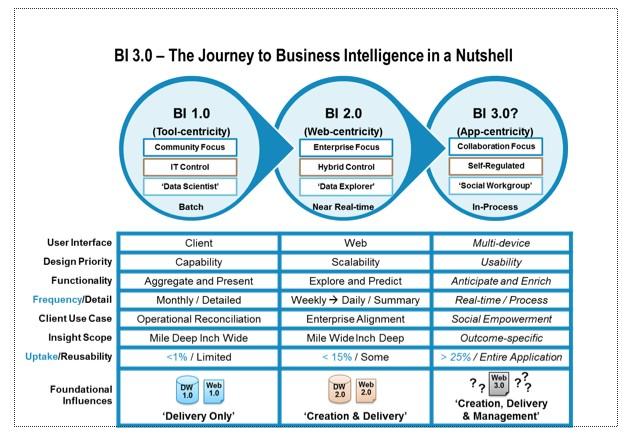.
Introduction
No-fault car accidents can be a confusing and stressful experience. If you’re involved in one, it’s important to know your rights and understand the coverage you have. No-fault car insurance is a type of insurance coverage that pays for the medical expenses and lost wages of anyone injured in a car accident, regardless of who is at fault. This type of insurance can be a valuable asset, especially if you’re injured in an accident that’s not your fault. No-fault insurance ensures that you’ll have coverage for your medical expenses and lost wages, no matter who caused the accident.
What is No-Fault Car Insurance?
No-fault car insurance is a type of insurance that covers the medical expenses and lost wages of anyone injured in a car accident, regardless of who is at fault. This type of insurance is required in some states, and it can be a valuable asset if you’re involved in an accident. No-fault insurance can provide you with peace of mind, knowing that you’ll have coverage for your medical expenses and lost wages, even if the accident was not your fault. Thus, it can also help you avoid the hassle and expense of a lawsuit.
No-fault car insurance is a valuable asset for anyone who drives. If you’re involved in an accident, it can help you get the medical care and financial assistance you need to recover from your injuries. No-fault car insurance is a type of insurance that can help you protect yourself financially if you’re involved in a car accident. If you’re considering purchasing no-fault car insurance, it’s important to compare quotes from different insurance companies to find the best rate. You should also make sure that you understand the coverage provided by your policy and that you’re comfortable with the deductible.
No-fault car insurance is a controversial topic. Some people believe that it’s a good way to ensure that everyone who is injured in a car accident has access to the medical care and financial assistance they need. Others believe that it’s too expensive and that it leads to higher insurance rates. Ultimately, the decision of whether or not to purchase no-fault car insurance is a personal one. You should weigh the pros and cons of the coverage and make the decision that’s best for you and your family.
If you’re involved in a no-fault car accident, it’s important to contact your insurance company as soon as possible. Your insurance company will be able to help you file a claim and get the benefits that you’re entitled to.
The Aftermath: No-Fault Car Accidents
No-fault car accidents can be a confusing aftermath. In the aftermath of a car accident, you’re likely feeling shaken up and disoriented. The last thing you want to deal with is a complicated insurance claim. That’s where no-fault insurance comes in.
How does no-fault insurance work?
In a no-fault insurance state, each driver’s insurance company pays for their own medical expenses and lost wages, regardless of who caused the accident. This can be a big advantage, especially if you’re in an accident with an uninsured or underinsured driver. No-fault insurance can also help to speed up the claims process, so you can get the compensation you need to recover from your injuries.
There are 12 states that have adopted some form of no-fault insurance. These states are: Hawaii, Kansas, Kentucky, Massachusetts, Michigan, Minnesota, Nevada, New Jersey, New York, North Dakota, Pennsylvania, and Utah. Each state has its own unique set of no-fault laws, and policymakers should consider the pros and cons before deciding whether to adopt no-fault insurance in their state.
No-fault insurance is not without its critics. Some people argue that it can lead to higher insurance rates and that it can make it more difficult to hold negligent drivers accountable. However, proponents of no-fault insurance argue that it can help to reduce the number of lawsuits and that it can make the claims process more efficient.
If you’re involved in a car accident in a no-fault state, it’s important to contact your insurance company as soon as possible. They will be able to help you file a claim and get you the compensation that you’re entitled to.
What Happens If I’m in a No-Fault Car Accident?
Life can throw curveballs at you when you least expect them, and no-fault car accidents are no exception. These incidents can leave you feeling disoriented, confused, and unsure of what to do next. But don’t fret, folks! We’ve got your back with this comprehensive guide to help you navigate the complexities of no-fault car accidents.
Benefits of No-Fault Insurance
When it comes to no-fault insurance, there are a few perks that might come in handy. First and foremost, it could potentially lighten the load on your wallet. Why, you ask? Because no-fault insurance can help reduce the overall cost of car insurance. That’s like finding a magical money-saving genie!
But hold on, there’s more! No-fault insurance can also give the claims process a much-needed turbo boost. In many cases, it allows claims to be processed at the speed of light, reducing the time you spend twiddling your thumbs and wondering when you’ll see a dime.
The Claims Process Made Simple
Now, let’s delve into the nitty-gritty of the claims process for no-fault car accidents. Here’s a step-by-step breakdown to make things crystal clear.
Step 1: Report the Accident
First things first, you need to let your insurance company know about the unfortunate encounter you’ve just had. Don’t delay; report the accident as soon as you can. It’s like putting a Band-Aid on a boo-boo – the sooner you do it, the better the chances of a speedy recovery.
Step 2: Gather Evidence
Next, it’s time to become a detective and gather all the evidence you can lay your hands on. Take photos of the damage, get contact information from any witnesses, and jot down any other pertinent details. This evidence will be your trusty sidekick in proving your case.
Step 3: File a Claim
Now, it’s time to fill out the paperwork and officially file a claim with your insurance company. Make sure you include all the evidence you’ve gathered so far. It’s like building a puzzle – every piece helps complete the picture.
Step 4: Wait for Approval
Once you’ve filed your claim, it’s time for the waiting game. Your insurance company will assess the claim, verify the details, and determine if you’re entitled to compensation. Fingers crossed for a positive outcome!
Step 5: Receive Payment
If your claim is approved, you’ll receive payment from your insurance company. This payment can be used to cover expenses like medical bills, car repairs, and any other costs associated with the accident. It’s like a financial lifeline after a storm.
What You Should Know About No-Fault Car Accidents
Automobile mishaps are stressful enough, but navigating the claims process with no-fault insurance can add an extra layer of confusion. Understanding the intricacies of this coverage is crucial for protecting your rights and ensuring fair compensation. In this article, we’ll explore the ins and outs of no-fault car accidents, providing valuable information to empower you in this challenging situation.
No-fault insurance is a type of car insurance policy designed to expedite the coverage process by eliminating the need to determine fault after an accident. Instead, each driver’s insurance company covers their own policyholder’s damages, regardless of who caused the mishap. This system aims to simplify the claims process, reduce disputes, and ensure prompt compensation for medical expenses and lost wages.
Disadvantages of No-Fault Insurance
While no-fault insurance offers certain advantages, it’s not without its drawbacks. One of the most significant concerns is the potential for higher insurance premiums for drivers who are at fault in accidents. Under a no-fault system, insurance companies may increase premiums for drivers who file multiple claims, even if they weren’t responsible for the accidents. This can be particularly unfair for drivers with clean driving records who find themselves in unfortunate situations.
Another disadvantage of no-fault insurance is that it can limit your ability to seek compensation for non-economic damages, such as pain and suffering. In fault-based systems, victims can pursue compensation for these intangible losses, but no-fault policies typically restrict or eliminate such claims. This can leave victims feeling shortchanged, especially in cases of severe injuries or emotional distress.
Furthermore, no-fault insurance can incentivize fraudulent claims and insurance fraud. Since drivers can file claims with their own insurance companies regardless of fault, there’s a greater temptation to exaggerate or even fabricate injuries and damages. This can drive up insurance costs for everyone and undermine the integrity of the system.
In addition, no-fault insurance can discourage accountability and prevent drivers from taking responsibility for their actions. Without the need to prove fault, drivers may be less cautious behind the wheel, leading to an increase in reckless driving and unsafe road conditions. This can have far-reaching consequences for the safety of all road users.
It’s important to weigh the pros and cons of no-fault insurance carefully before making a decision. While it can offer convenience and prompt compensation, the potential for higher premiums, limited compensation for non-economic damages, and other drawbacks should be taken into account. By understanding the nuances of no-fault insurance, you can make an informed choice that best suits your individual needs and circumstances.
No-Fault Car Accidents: What You Need to Know
Imagine getting into a car accident that wasn’t your fault, but you still end up footing the bill for repairs and medical expenses. That’s the catch with traditional car insurance, but no-fault insurance can step in to ease your burden in such scenarios. Let’s delve into the world of no-fault insurance to understand its ins and outs.
Understanding No-Fault Insurance
No-fault insurance, as the name suggests, eliminates the need to determine fault in an accident. Instead, each driver’s insurance policy covers their own losses, regardless of who caused the crash. This approach simplifies the claims process, reduces disputes, and speeds up the payout time.
Pros and Cons of No-Fault Insurance
While no-fault insurance offers a streamlined claims process, it also comes with its fair share of drawbacks. One of the key benefits is reduced costs, as there’s no need to hire attorneys or engage in lengthy fault-finding procedures. However, it can lead to higher insurance premiums, as insurers spread the risk across all policyholders.
How No-Fault Insurance Works in Practice
In a no-fault system, both drivers involved in an accident file claims with their own insurance companies. The insurance companies then determine the damages and pay out the benefits, regardless of who caused the accident. This eliminates the blame game and allows drivers to get back on their feet faster.
Key Differences Between No-Fault and Traditional Insurance
No-fault insurance differs significantly from traditional fault-based insurance. In the traditional system, the at-fault driver’s insurance company is responsible for covering the damages of the other party. This process can be time-consuming and adversarial, often involving lawsuits and disputes. In contrast, no-fault insurance eliminates these hassles and provides a faster, more equitable resolution.
The Nitty-Gritty: Five States with No-Fault Insurance Laws
Currently, no-fault insurance laws are in place in only a handful of states in the United States:
1. **New York:** The Empire State has the longest-standing no-fault insurance law in the country, dating back to 1973.
2. **New Jersey:** The Garden State adopted no-fault insurance in 1972, and it remains in effect today.
3. **Michigan:** The Great Lakes State is another early adopter of no-fault insurance, which went into effect in 1973.
4. **Pennsylvania:** The Keystone State implemented no-fault insurance in 1974, but it applies only to personal injury protection (PIP) coverage.
5. **Hawaii:** The Aloha State is the most recent addition to the no-fault club, having adopted it in 2019.
Conclusion
No-fault insurance can be a good option for drivers who want to reduce the cost of their insurance and speed up the claims process. However, drivers should be aware of the potential disadvantages of no-fault insurance before making a decision. It’s important weigh the pros and cons carefully and choose the insurance type that best fits their needs and circumstances.




Leave a Reply